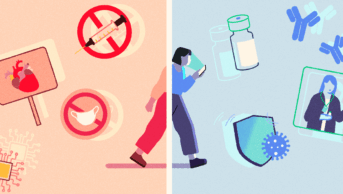
istockphoto.com
How far do you go to protect patient’s rights? Their right to observe their beliefs, the right to participate in their own healthcare decisions and the right to make informed choices.
Many medicines contain ingredients that some patients would find unappealing or unsuitable due to their beliefs or lifestyle choices, such as heparin from pig ileum, capsules from gelatine, or the presence of alcohol as a solvent. We do not bring this to the attention of patients or prescribers. Perhaps we consider the practicalities of this too great to surmount, or too inconsequential to the patient to justify the time or perhaps we simply have overlooked this.
Where there is a recognised need to disclose the ingredients, such as allergies, the information is forthcoming, the importance is acknowledged, documented and communicated by staff. From the point of view of the patient the avoidance of certain ingredients based on faith or moral reasoning may be equally important but usually not recognised or taken seriously.
The information may not be easily available in the summary of product characteristics (SPC) or the patient information leaflet (PIL) where, often, there is no information on the source of origin of the ingredients. Medicines from hospital stock are not routinely given with any information on the constituents, thereby denying the patient knowledge or placing the responsibility to find this information on the patient who, by default, has placed their trust in the system.
Patient choice should form part of the clinical care from the start. It would be impractical for nursing, pharmacy or medical staff in hospitals to discuss every ingredient of every medicine with every patient at the point of delivery.
So perhaps clinical practice guidelines should be prepared with the ingredients of medicines in mind. For example, products could be labelled with “V” for suitable vegetarians’ on the box. SPCs and PILs should state the sources of origin and suitability for specialised populations. Faith leaders should be involved with formulary choices and local policies so a deeper understanding of the issues on both sides can be brought to the table. Change will come when patient, public and professional pressure is applied to the healthcare industry and products and services are designed with the user in mind.
You may also be interested in

Calling the shots: the pharmacists combatting vaccine misinformation

Embedding quality improvement in pharmacy practice: a departmental strategy at University Hospitals of Derby and Burton
